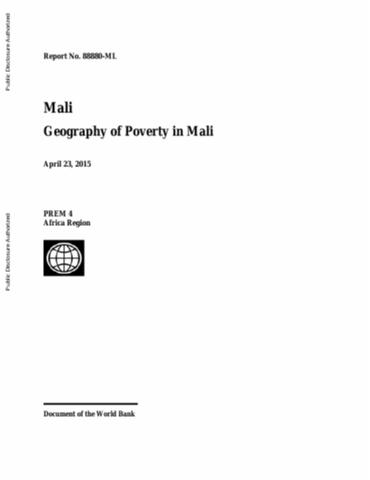Resource information
This study discusses the impact of economic geography and (low) population density on development outcomes in Mali and explores how policies to reduce poverty can be made more effective by taking these two factors into account. The crisis in north Mali which started in 2012 and continues to date has brought questions of economic geography to the center of attention. To help answer such questions, and to analyze how to reduce poverty in Mali as a whole, this study uses different sources of information to analyze the diversity of livelihood patterns, in access to services and in living standards. The study uses quantitative information from household surveys, population and firm censuses, administrative and geographic data, and qualitative information about livelihoods. This study argues that the authorities will need to employ all three policy instruments, while emphasizing that if the objective is poverty reduction, most attention should be focused on spatially blind approaches. The study is organized as follows: chapter one gives introduction. Chapter two emphasizes differences in population density which allows distinguishing between types of agglomeration from villages, to rural town, to large cities. Chapter three categorizes the country into various livelihood zones and considers how the agro-physical environment affects the way people live. In chapter four authors turn to household welfare. Chapter five considers access to services. Chapter six is forward looking.


